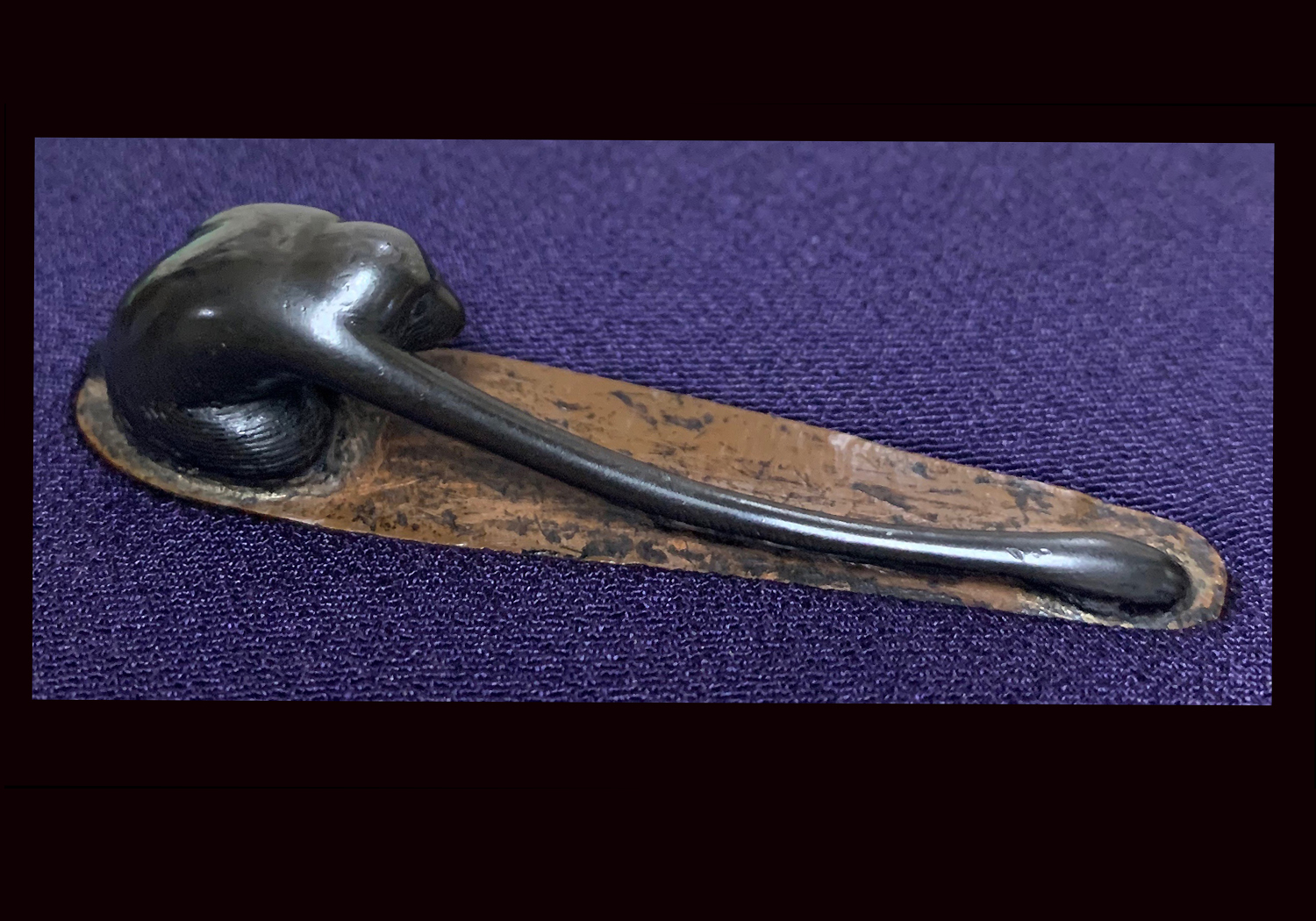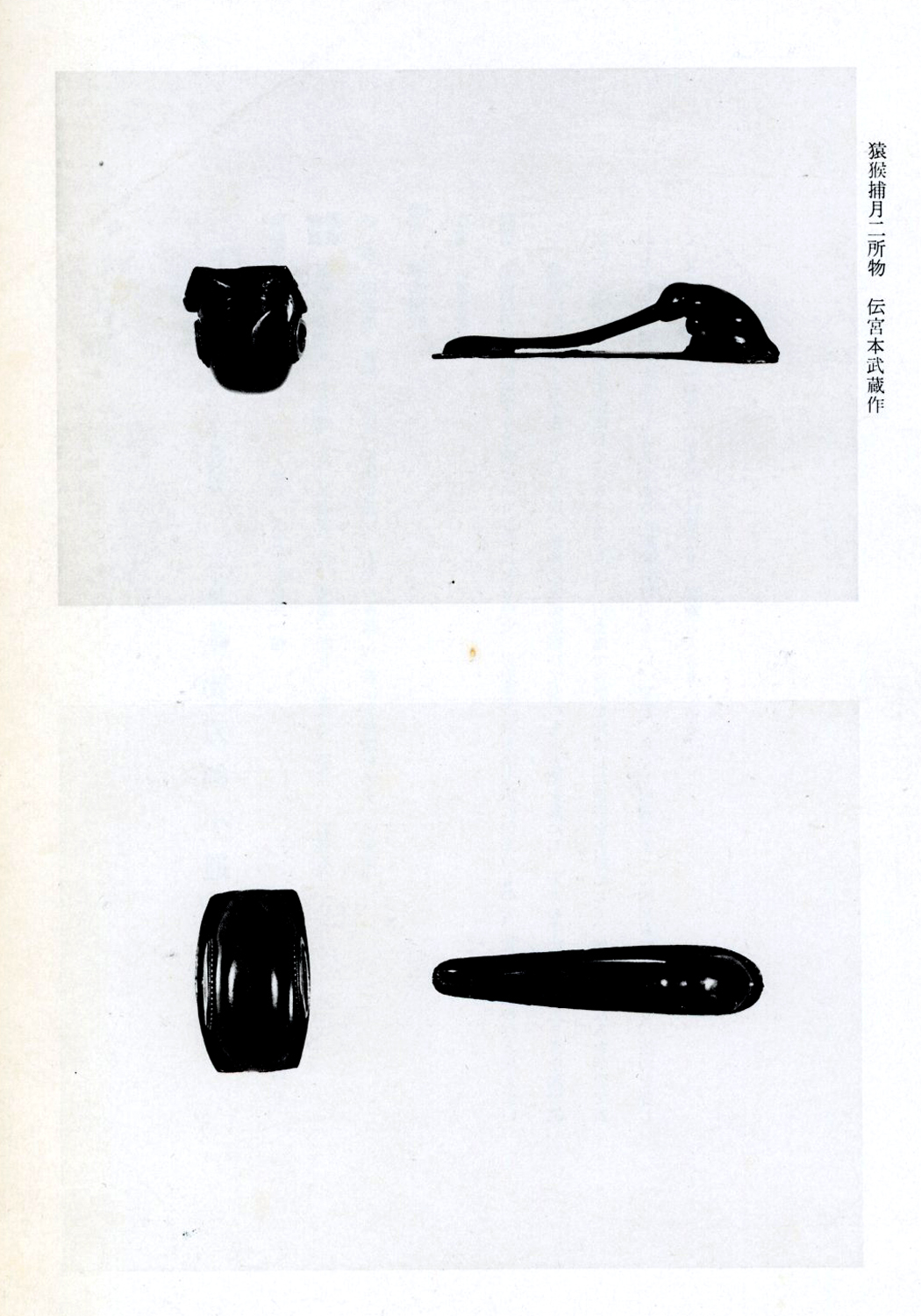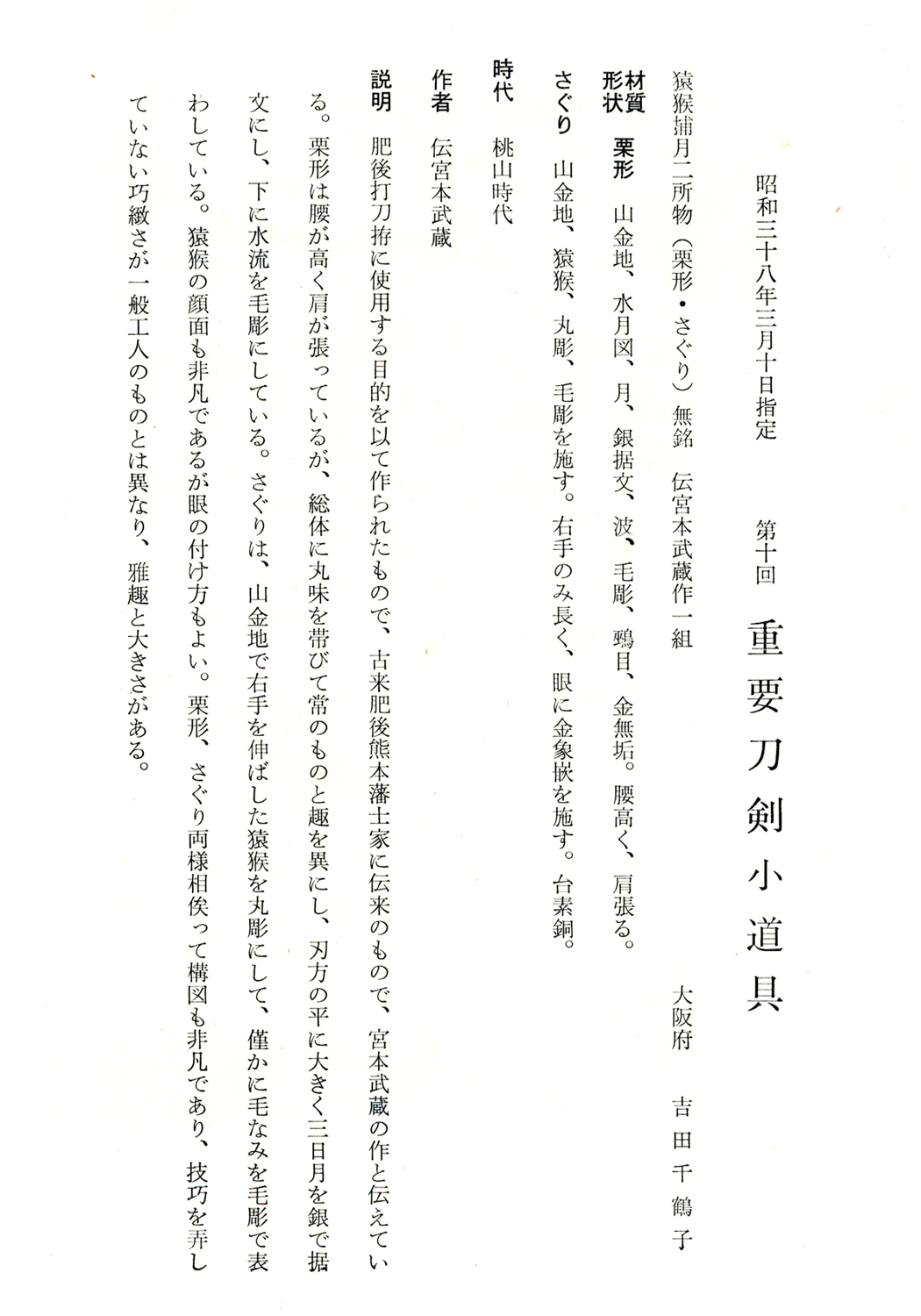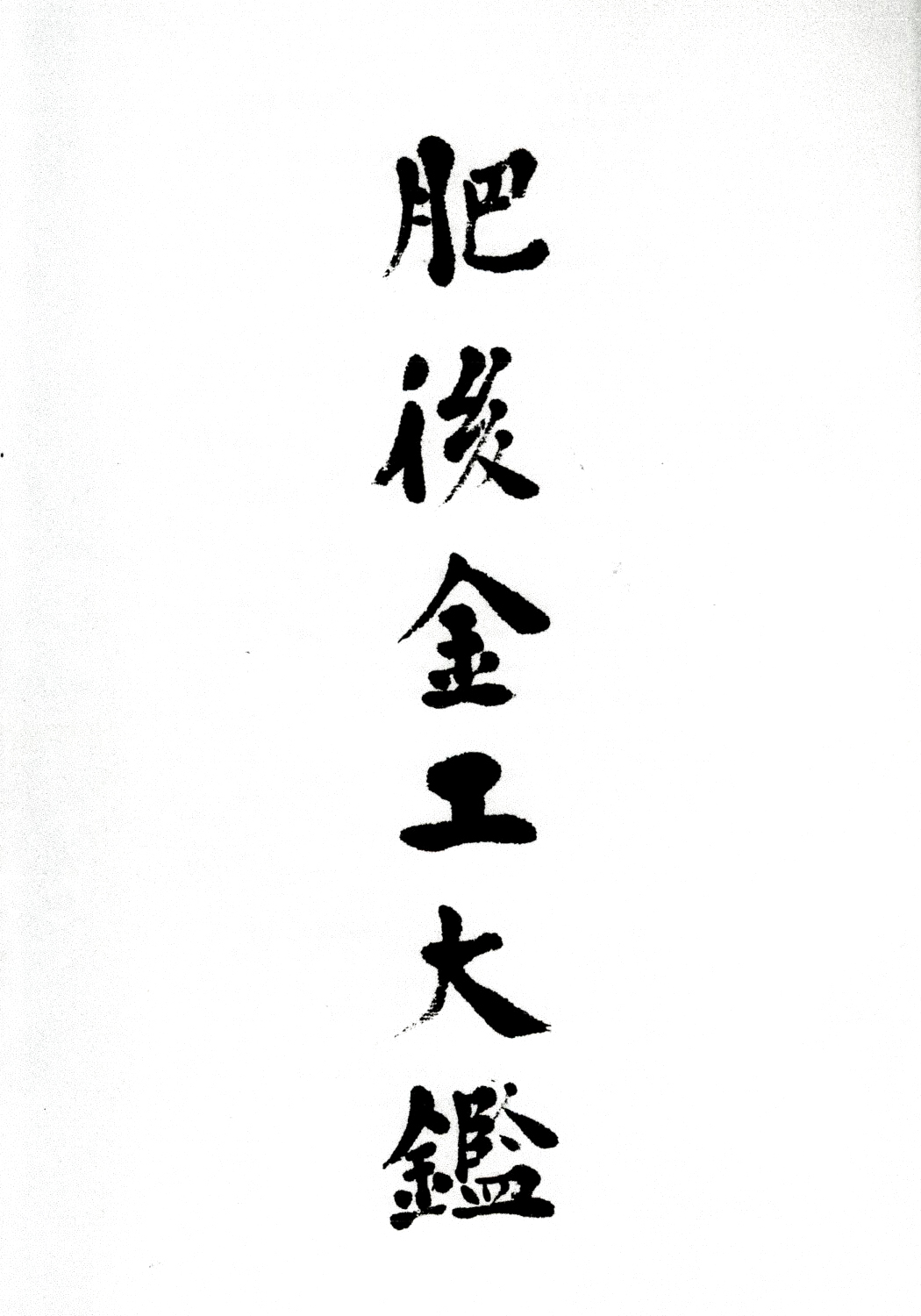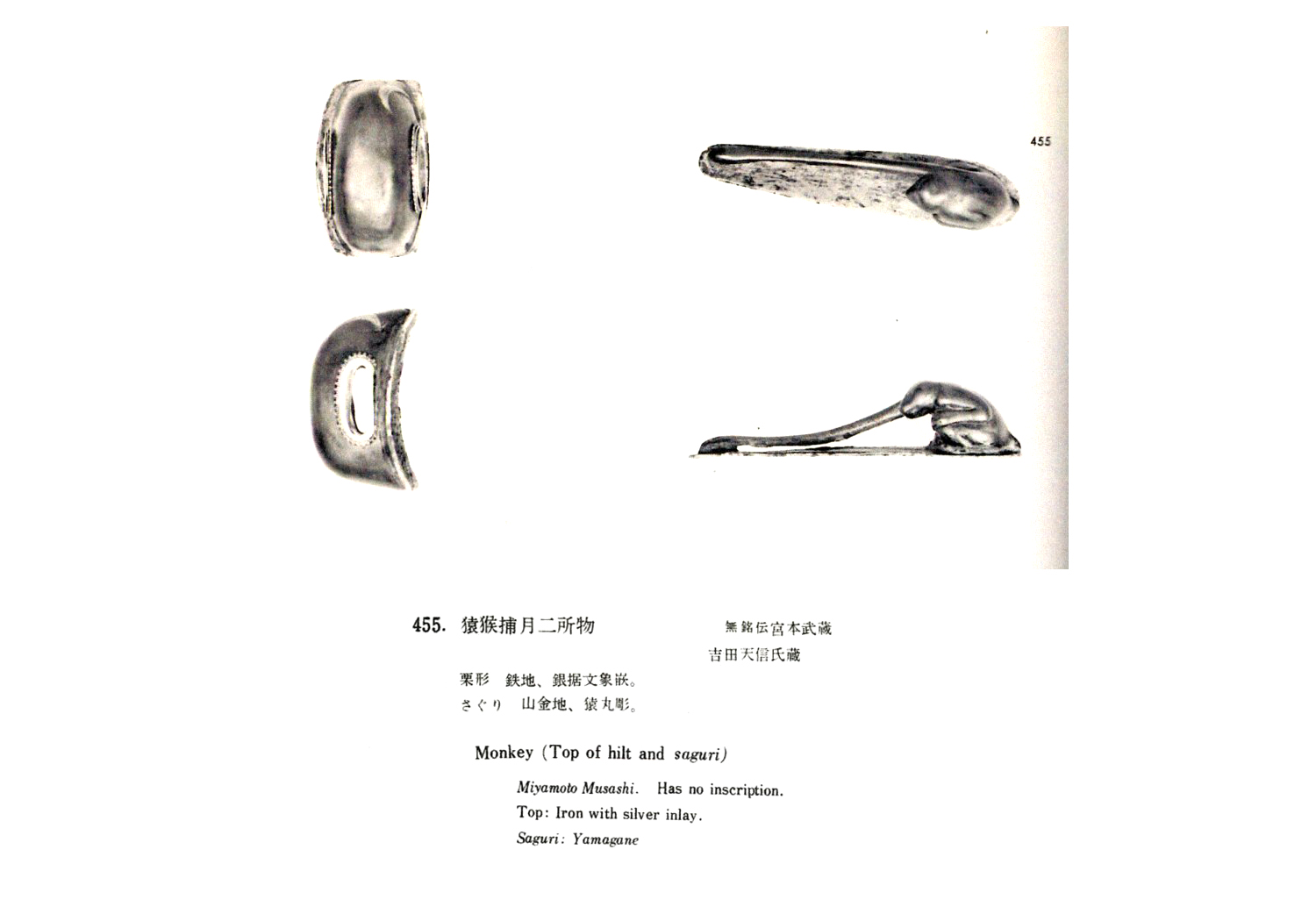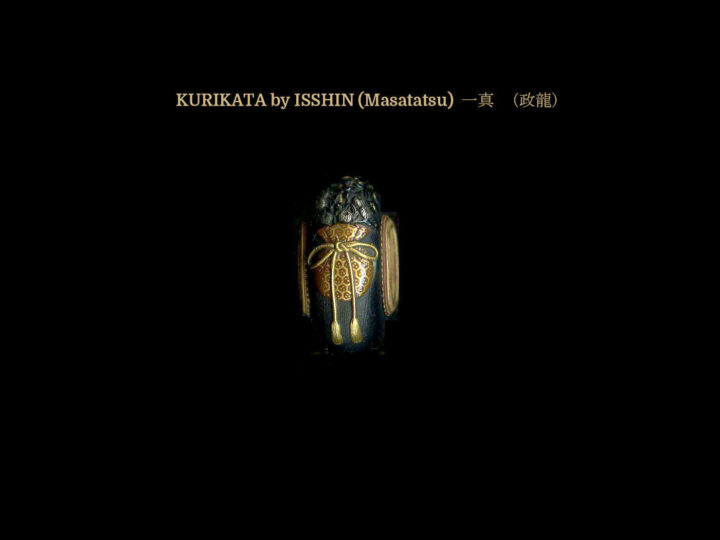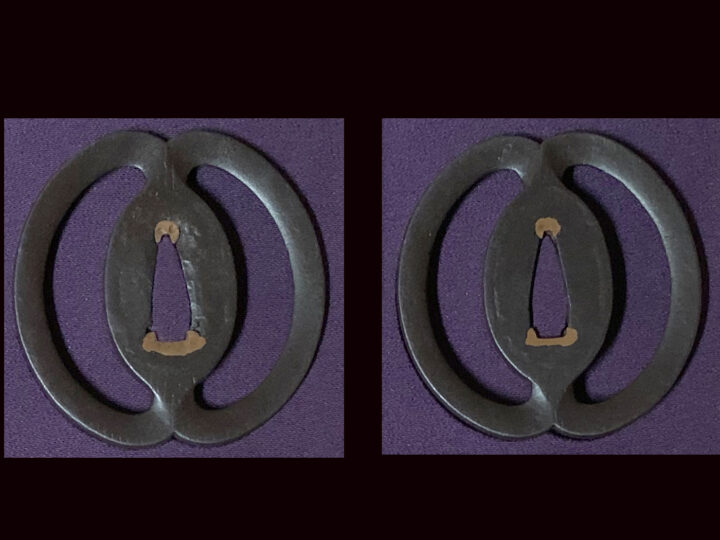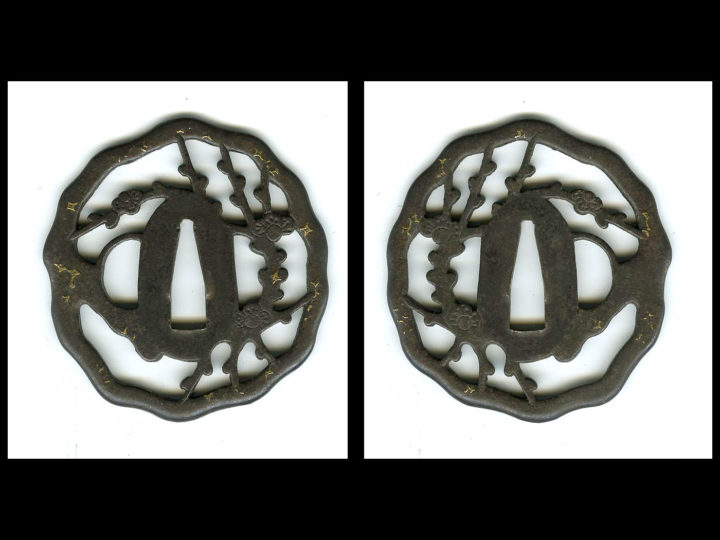
Miyamoto Musashi (1584-1645) whose art name was Niten, achieved great fame as a master swordsman. In the seventeenth year of Kan-ei (1640), he accepted an offer from lord Hosokawa Tadatoshi, and moved to Higo where he taught military strategy. In the second year of Shoho (1645), in the sixth year of his residence there, he died at age 62. Today it is not possible for us to know the extent of his skill as a swordsman, however the statue of Fudo-myo-o made by Musashi gives us an idea. The perfection and strong determination that the statue conveys to the observer must have been at least part of Musashi’s mastery.
Miyamoto Musashi left several paintings. Using the subject of flying birds and running horses as subjects, he was able to capture the movement of the animals very precisely. Strong in brush stroke, observation and concentration of the subject, these characteristics of his paintings would have great influence on his swordsmanship.
Musashi made several tsuba and other sword fittings during his six year residence in Higo. During that time he probably became acquainted with several artists including the first Jingo, the second Hikozo, the first Kanshiro, and Hayashi Matashichi. He would certainly have developed a strong interest in designing and making tsuba. These works of Musashi are not severe but have warmth and sophistication, the same artistic sense as his painting of later years; strong and mature with the restrained taste of the times.
Of the interesting and unusual examples of kodôgu in my Musashi collection (all of which have been certified by the NBTHK in Japan to have been made by Musashi), these are probably the rarest, most unusual, and most interesting. They are comprised of a kurikata and saguri/kaeri done in the classic theme of a long armed monkey reaching for the reflection of the crescent moon in a pool of water. They are made of shakudo with bases of yamagane. They have been certified as Jûyô kodôgu by the NBTHK in the tenth Jûyô shinza held in March of 1963. A similar theme can be found in the pair of menuki made by Musashi shown in the following article about the balance of the Musashi collection.
Additionally, this unusual set of fittings was published in the Higo Kinko Taikan as item number 455 on page 405.
A translation of the Jûyô Kodôgu certification is as follows:
Designated Jûyô Kodôgu at the 10th shinsa held on the 10th of March 1963.
Monkey (enkô, see Translator’s Note 1) catching the moon futadokoro-mono (matched pair of kurikata and saguri/kaeri).
Unsigned: den Miyamoto Musashi saku, one set.
Item Appearance: The kurikata has a yamagane ground with an illustration of the moon in silver applied inlay and waves in ke-bori line engravings. The shitodome are solid gold and the shape is high and wide. The saguri/kaeri has a yamagane ground and carved in the round with ke-bori line engravings. The monkey’s right arm alone is long, and the eyes have been done in inlaid gold. The base plate is in suaka.
Period: Momoyama
Maker: den Miyamoto Musashi
Description: These were made to be used on a Higo uchigatana koshirae, and from long ago they have been handed down in the family of a retainer of the Higo Kumamoto clan as works said to be by Miyamoto Musashi. The kurikata is high and wide with an entirely rounded appearance, which differs from the shapes of kurikata usually seen (see Translator’s Note 2). On the side of the kurikata facing upwards, a large crescent moon has been separately carved and inlaid in silver with ke-bori line carvings of flowing water below that. The saguri has a yamagane ground and is a carving in the round of a monkey extending its right arm. Although slight, there are some ke-bori line engravings on the piece. The monkey’s face is unusual and the manner in which the eyes are attached is excellent. Both the kurikata and the saguri are well matched, and the composition is highly unique. The craftsmanship is without fault and highly elaborate, differing from that of a typical artisan, which makes it a highly elegant piece.
Note 1: The use of the term enkô (猿猴) for monkey is special in that this refers to both monkey and when combined with “ga tsuki” (が月), it refers to someone who brings ruin on themselves by foolishly attempting something that is beyond their power, such as the monkey that drowned trying to catch the moon’s reflection in the water.
Note 2: If one looks at the kurikata typically found on Tenshô koshirae, which formed the basis for the early Higo koshirae, one will see that they all have this entirely rounded shape. However, this kurikata seems rather larger than what is even typical of the kurikata on Tenshô koshirae.


